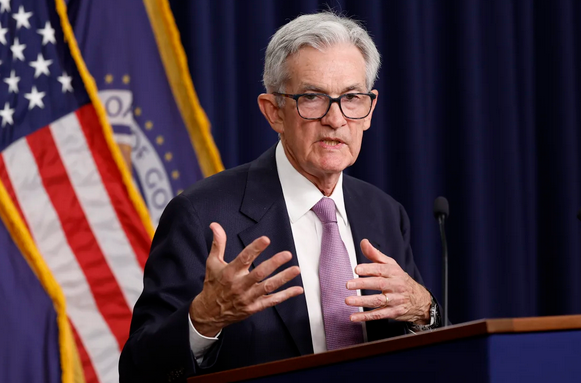The federal funds rate, also known as the Fed rate, is the interest rate that banks in the United States charge each other to borrow and lend money overnight. The Federal Reserve, the country’s central bank, influences this rate through monetary policy decisions.
The Federal Reserve cut its benchmark interest rate November 2024 by 0.25 percentage points to a range of 4.5% to 4.75%, its lowest since February 2023. The Fed is cutting its influential fed funds rate to push down borrowing costs on all kinds of loans and boost the economy to prevent unemployment from rising severely.
 Follow Vijay Broadcast on WhatsApp
Follow Vijay Broadcast on WhatsApp
 Follow Vijay Broadcast on Instagram
Follow Vijay Broadcast on Instagram
- Interest rates: The federal funds rate affects interest rates for credit cards, mortgages, auto loans, and business borrowing.
- Recent Cuts: The Fed lowered its key overnight lending rate again, following a previous half-point cut in mid-September.
- Future Cuts Expected: Analysts predict another quarter-point cut in December.
- Effect on Fed Funds Rate: By year-end, the rate may have dropped a full percentage point.
- Perspective on Rate Declines: Falling rates don’t necessarily mean “low” rates; they remain high and are expected to only moderately decline through 2025.
Impact on Debts
- Credit Cards:
- Average rate in September: 20.78%.
- Current rate: 20.39% (still high).
- Rates remain significantly above the 2022 average of 16.3%.
- Advice: Pay off balances quickly. Consider a 0% balance transfer card or low-interest personal loan.
- Alternative: Transfer balance to a credit card from a credit union or local bank for lower rates.
- Mortgages:
-
- Mortgage rates have risen despite Fed rate cuts.
- Current 30-year rate: 6.79% (up from 6.2% pre – September cut but below 7.5% from last year).
- Economic Impact: Tied to 10-year Treasury yields, which respond to inflation, growth, and Fed outlook.
- Outlook: Rates may drift higher amid policy uncertainty.
-
Savings Opportunities
- Interest Earnings: Despite modest Fed cuts, interest rates on savings are still benefiting savers.
- Savings Accounts: Traditional accounts offer returns below 1%; online high-yield accounts offer between 4% and 5%, exceeding inflation at 2.1%.
- Certificates of Deposit (CDs): Offering rates of 4.25% to 4.6%.
- Treasuries & Municipal Bonds:
- Short-term T-bills yielding between 4.32% and 4.54%.
- Treasury notes yielding 4.19% to 4.35%, higher than in September.
- Muni bonds remain attractive and tax-advantaged.
Investment Advice
- Avoid Over-investing in Low-Risk Options:
- High rates on cash products can be tempting but may reduce potential gains elsewhere.
- Avoid the “cash trap”; keep cash savings to 6-12 months of living expenses, especially if not nearing retirement.
- Diversification & Equity Outlook:
- Maintain a diversified portfolio.
- U.S. large-cap stocks are favored due to strong cash flows and AI productivity gains.
- Stock performance is driven by earnings and rates, resilient across different political administrations.
This breakdown provides a snapshot of the impact of the Fed’s rate cuts on various financial aspects, and guidance on managing debt, savings, and investments in a shifting rate environment.
All values, calculations and our content are based on our own assumptions and thoughts. Please consult with your financial advisor before making any investment decisions based on this article. Vijay Broadcast is not responsible for any Profits / Losses. Thank you for reading, and we look forward to sharing another interesting article with you soon!
 Follow Vijay Broadcast on WhatsApp
Follow Vijay Broadcast on WhatsApp
 Follow Vijay Broadcast on Instagram
Follow Vijay Broadcast on Instagram

